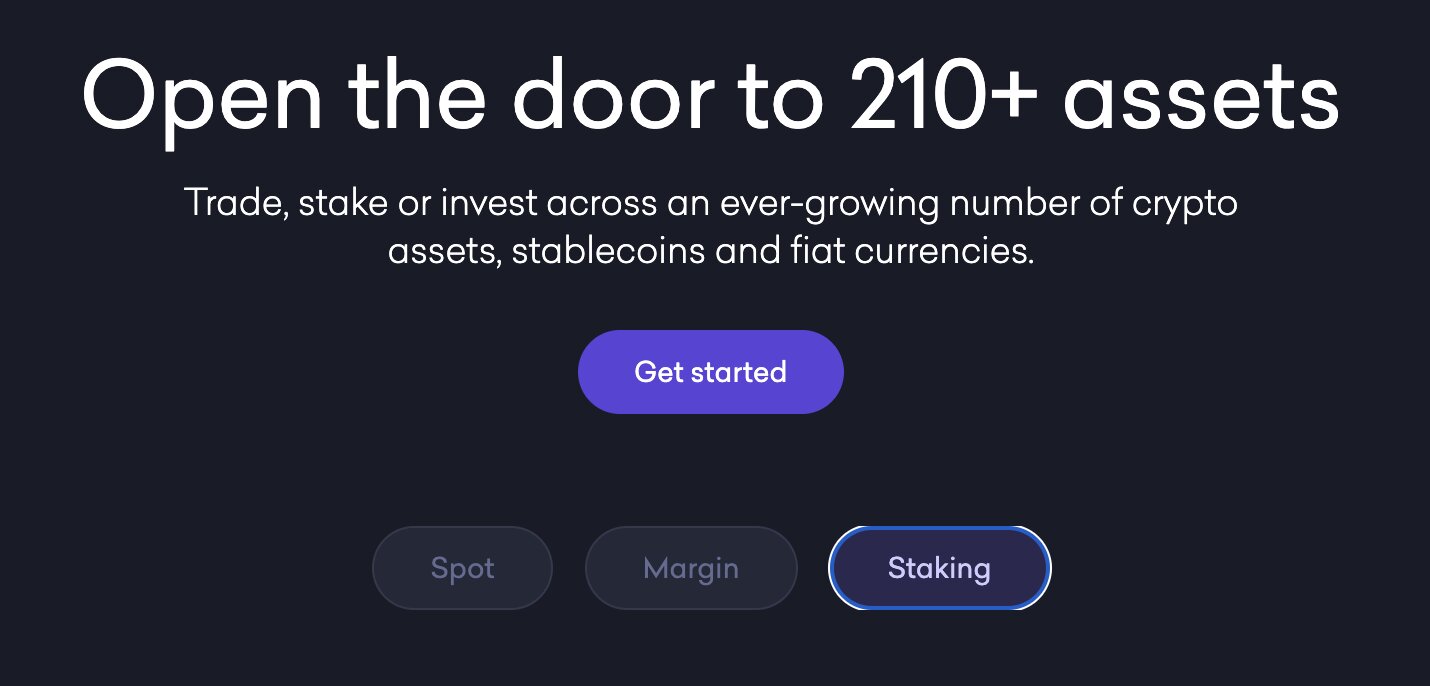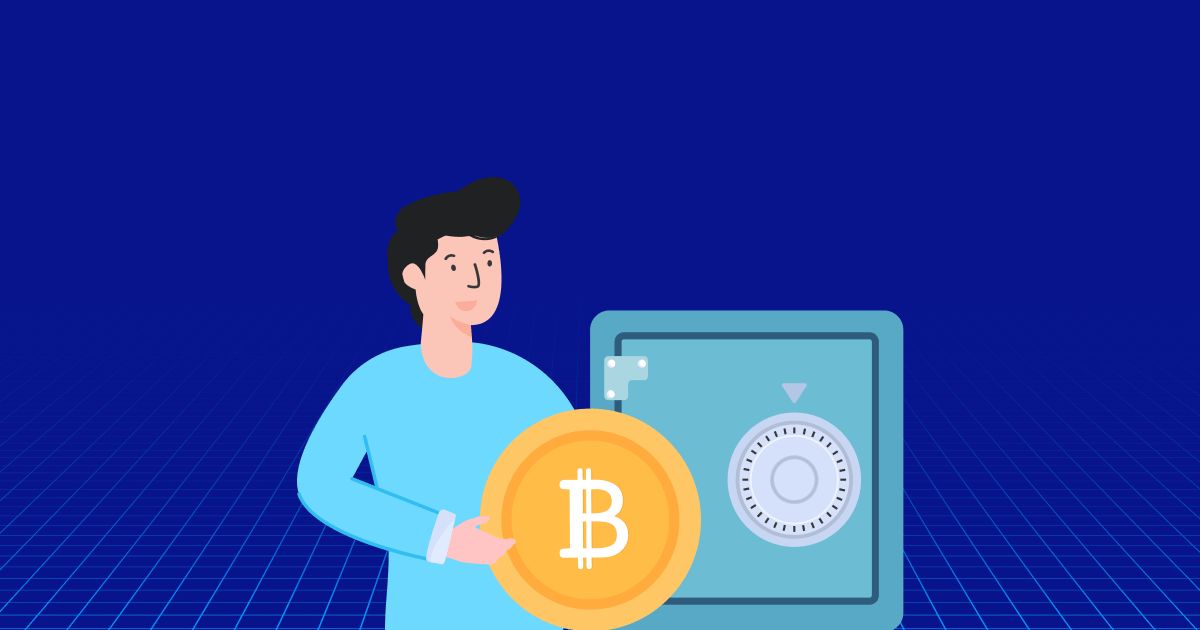Introduction
Welcome to the exciting world of cryptocurrency! As you delve deeper into this vast digital landscape, you’ll come across a variety of terms and concepts that may seem intimidating at first. One such term is “staking.”
Staking is a process that allows individuals to participate in the validation and verification of transactions on a blockchain network. It involves holding and locking a certain amount of cryptocurrency in a compatible wallet to support the network’s operations and earn rewards in return.
In recent years, staking has gained significant popularity among cryptocurrency enthusiasts. It offers an alternative to traditional mining, which requires extensive computational power and energy consumption. With staking, users can actively participate in the network’s security and consensus mechanisms while earning passive income.
This article aims to demystify the concept of staking in cryptocurrency. We’ll explore how it works, the advantages it offers, the different types of staking, and the key considerations before getting started. We’ll also discuss the risks and challenges associated with staking and provide an overview of some popular staking coins and services.
Whether you’re a seasoned crypto investor or just getting started, understanding staking is essential to fully grasp the diverse opportunities offered by blockchain technology. So, let’s dive in and explore the fascinating world of staking in cryptocurrency!
What is Staking in Cryptocurrency?
Staking is a process in which individuals hold and lock a certain amount of cryptocurrency, typically in a compatible wallet, to support the operations of a blockchain network. By doing so, they contribute to the network’s security, consensus mechanisms, and transaction validation.
When users stake their cryptocurrency, they essentially act as validators, ensuring the accuracy and integrity of transactions on the blockchain. This process is fundamental to maintaining a decentralized and secure network.
Staking differs from traditional mining, which is commonly associated with cryptocurrencies like Bitcoin. While mining relies on powerful hardware and complex mathematical calculations to solve blocks and verify transactions, staking leverages users’ investment and participation in the network to achieve the same goals.
By staking their cryptocurrency, users are not only supporting the network but also becoming eligible to earn rewards. These rewards can come in the form of additional cryptocurrency tokens or transaction fees paid by users of the network. The amount of rewards earned is often proportional to the number of tokens staked.
It’s important to note that not all cryptocurrencies are stakable. Staking is typically available for blockchain networks that use a proof-of-stake (PoS) consensus mechanism. PoS networks select validators based on the number of tokens they hold and are willing to stake. This mechanism promotes network security and discourages malicious activities, as validators would face the risk of losing their staked tokens if they act dishonestly.
Overall, staking offers a more energy-efficient and accessible alternative to traditional mining. It allows individuals to actively participate in securing the network and earning rewards while eliminating the need for expensive mining equipment.
In the next sections, we will explore how staking works in more detail, discuss its advantages, delve into different types of staking, and compare it with traditional mining to gain a comprehensive understanding of this fascinating concept.
How Does Staking Work?
Staking in cryptocurrency involves a straightforward process that requires users to hold and lock a specific amount of tokens in a compatible wallet. The steps to stake may vary depending on the blockchain network, but the general process is as follows:
- Choose a Staking Coin: First and foremost, you need to select a cryptocurrency that offers staking capabilities. Look for coins that utilize a proof-of-stake (PoS) consensus mechanism, as these are typically stakable.
- Acquire the Staking Coin: Once you’ve identified a stakable coin, you need to acquire the required amount of tokens. This can be done through exchanges, where you can purchase the cryptocurrency with other digital assets or traditional currency.
- Set Up a Wallet: Next, you’ll need to set up a wallet that supports staking. Not all wallets provide this feature, so ensure that the wallet you choose is compatible with the specific staking coin.
- Transfer and Stake your Tokens: Once your wallet is set up, transfer the acquired tokens to your wallet address. From there, you can initiate the staking process, which usually involves locking the tokens for a specific period. The length of the lock-up period can vary depending on the network.
- Earn Rewards: By participating in the staking process, you become eligible to earn rewards. These rewards can be in the form of additional tokens or transaction fees paid by users who utilize the network. These rewards are typically distributed periodically, depending on the network’s rewards distribution system.
- Monitor and Manage your Staked Coins: It’s important to stay updated and monitor the status of your staked coins. Some wallets provide tracking features, allowing you to monitor your staking activity and rewards. It’s also crucial to keep your wallet secure and protect your private keys to prevent unauthorized access.
The staking process can vary slightly depending on the specific cryptocurrency and staking platform being used. Some platforms may offer additional features, such as delegation, where users can delegate their staking rights to other validators in exchange for a portion of the rewards.
Overall, staking provides a simple and accessible way for individuals to participate in blockchain networks, contribute to network security, and earn rewards. It’s a more sustainable and energy-efficient alternative to traditional mining, making it an attractive option for cryptocurrency holders.
Advantages of Staking
Staking in cryptocurrency offers several advantages that make it an attractive option for both crypto enthusiasts and investors. Let’s explore some of the key advantages of staking:
- Earning Passive Income: One of the primary advantages of staking is the ability to earn passive income. By staking your cryptocurrency, you can participate in the network’s operations and earn rewards in return. These rewards can be in the form of additional tokens or transaction fees paid by users of the network. Staking provides a way to generate income from your crypto holdings without the need for active trading or mining.
- Low Entry Barrier: Unlike traditional mining, staking doesn’t require expensive hardware or complex setups. It has a low entry barrier, allowing individuals with any amount of cryptocurrency to participate and stake their tokens. This makes staking more inclusive and accessible to a broader range of users.
- Energy Efficiency: Staking is considered a more energy-efficient alternative to mining. Proof-of-stake (PoS) networks, which are commonly used for staking, consume significantly less energy compared to proof-of-work (PoW) networks used in mining. This environmentally friendly aspect of staking appeals to individuals concerned about the ecological impact of cryptocurrency mining.
- Network Security: Staking plays a crucial role in enhancing the security of blockchain networks. Validators who stake their tokens have a vested interest in the network’s integrity and consensus. They are financially incentivized to act honestly, as they stand to lose their staked tokens if they engage in malicious activities. This mechanism strengthens the security and decentralization of the network, making it more resistant to attacks.
- Steady Ownership of Tokens: By staking your tokens, you maintain ownership of them while supporting the network. Unlike other methods like lending or borrowing, where your tokens are temporarily transferred, staking allows you to hold onto your tokens while still earning rewards. This steady ownership ensures you are actively involved in the network’s growth and development.
- Potential Price Appreciation: In addition to earning rewards, staking can also contribute to the potential price appreciation of the staked tokens. As more individuals stake their tokens and show trust in the network, it can lead to increased demand and value for the staking coin. This potential price appreciation can provide additional returns on your staked holdings.
Overall, staking offers a range of advantages, including passive income generation, low entry barriers, energy efficiency, enhanced network security, steady token ownership, and the potential for price appreciation. These benefits make staking an attractive option for individuals looking to actively participate in the cryptocurrency ecosystem while earning rewards.
Different Types of Staking
Staking in cryptocurrency can take various forms, depending on the specific blockchain network and its staking mechanics. Let’s explore some of the different types of staking:
- Validator Staking: In this type of staking, users who hold and lock a specific amount of cryptocurrency become validators on the network. Validators play a crucial role in verifying transactions, proposing blocks, and maintaining consensus. They are responsible for participating in the network’s governance and ensuring its security.
- Delegated Staking: Some staking networks allow users to delegate their staking rights to other validators. Delegated staking involves choosing a trusted validator to stake your tokens on your behalf. Delegators still earn rewards, but the delegated validator performs the necessary operations. This type of staking is convenient for users who may not have the technical expertise or wish to actively participate in the staking process.
- Pool Staking: Pool staking involves multiple stakers joining forces by pooling their tokens together. This collective staking method allows participants to combine their staking power and increase their chances of being chosen as validators. Pool staking is particularly beneficial for individuals who have a relatively small amount of cryptocurrency and want to increase their chances of earning rewards.
- Flexible Staking: Some staking networks offer flexible staking options, where individuals can stake and unstake their tokens at any time. This type of staking provides more flexibility and liquidity compared to long lock-up periods required by other networks. However, the rewards and staking benefits may be adjusted based on the duration of the stake.
- Non-Custodial Staking: Non-custodial staking allows users to stake their tokens without the need to transfer them to a centralized staking platform. Instead, they can stake their tokens directly from their own wallets while maintaining full control of their private keys. Non-custodial staking enhances security by reducing the risk of tokens being lost or stolen from third-party platforms.
- Proof-of-Stake Chains: Proof-of-stake (PoS) chains, such as Ethereum 2.0, are transitioning from a traditional proof-of-work (PoW) consensus mechanism to PoS. In PoS chains, users can stake their tokens and participate in the network’s operation by validating transactions and securing the network. PoS chains offer staking opportunities with varying requirements and rewards.
It’s important to understand the specific staking mechanisms and requirements of each network before participating in staking. Different networks may have different minimum staking amounts, lock-up periods, and rewards distribution methods. Researching and staying informed about the chosen staking network is crucial to make informed decisions and maximize staking benefits.
By offering a range of staking options, cryptocurrency networks allow users to choose the staking method that suits their preferences and requirements. Whether you prefer to be a validator, delegate your staking rights, join a staking pool, enjoy flexibility, or maintain control over your assets, there’s a staking approach for you in the world of cryptocurrency.
Staking vs Mining: What’s the Difference?
Staking and mining are two distinct processes in the world of cryptocurrency, each offering unique advantages and operating on different principles. Let’s explore the key differences between staking and mining:
Consensus Mechanism: One of the main differences between staking and mining lies in the consensus mechanism used by the respective blockchain networks. Staking typically occurs in networks that utilize a proof-of-stake (PoS) consensus mechanism. In PoS networks, validators are chosen to validate transactions based on the number of tokens they hold and are willing to stake. On the other hand, mining is commonly associated with proof-of-work (PoW) networks, where miners compete to solve complex mathematical puzzles to validate transactions and earn rewards.
Hardware and Energy Requirements: Staking requires significantly less computational power and energy compared to mining. Mining often involves specialized hardware, such as ASICs (Application-Specific Integrated Circuits) or powerful GPUs (Graphics Processing Units), to perform the intensive computational calculations required to solve blocks. In contrast, staking only requires individuals to hold and lock a certain amount of cryptocurrency in a compatible wallet, making it more energy-efficient and accessible to a wider range of users.
Validation Process: In staking, participants act as validators and contribute to the network’s validation process by securing the consensus and verifying transactions. Validators are typically selected based on the number of tokens they hold and are willing to stake. They play an active role in maintaining network security and integrity. On the other hand, mining involves solving complex mathematical puzzles to compete for the right to validate transactions and add blocks to the blockchain. Miners rely on computational power and energy consumption to perform mining operations.
Rewards: Both staking and mining offer rewards, but the mechanisms and distribution differ. In staking, participants earn rewards in the form of additional tokens or transaction fees paid by users on the network. The amount of rewards is often proportional to the number of tokens staked. In mining, miners earn rewards for successfully mining a new block. These rewards can also come in the form of newly minted tokens or transaction fees, depending on the blockchain network.
Environmental Impact: Staking is generally considered to be more environmentally friendly compared to mining. The energy consumption involved in mining, especially in PoW networks, is often criticized for its ecological impact. In contrast, staking in PoS networks consumes significantly less energy, contributing to a more sustainable and greener approach to maintaining a blockchain network.
While both staking and mining play vital roles in maintaining the security and operations of blockchain networks, they differ in terms of consensus mechanism, hardware requirements, validation process, rewards, and environmental impact. The choice between staking and mining depends on individual preferences, investment capabilities, and network compatibility.
Considerations Before Staking
Before diving into the world of cryptocurrency staking, there are several important considerations to keep in mind. These considerations will help you make informed decisions and maximize the benefits of staking. Let’s explore some key factors to consider:
- Network Research: It’s crucial to thoroughly research the staking network you plan to participate in. Understand the network’s purpose, technology, development team, and overall reputation. Look for active communities, documentation, and updates to ensure the network is legitimate and has long-term potential.
- Risks and Rewards: Consider the potential risks and rewards associated with staking. While staking offers income generation opportunities, there are also risks involved, such as price volatility, regulatory changes, and network security vulnerabilities. Assess your risk tolerance and carefully evaluate the potential rewards against the risks involved.
- Staking Requirements: Different networks have varying staking requirements, such as minimum staking amounts, lock-up periods, and penalties for early withdrawals. Make sure you understand and are comfortable with the specific requirements before committing your tokens to a staking network.
- Wallet Security: Selecting a secure wallet is essential for staking. Choose wallets that offer robust security features, such as encryption, two-factor authentication, and hardware wallet integration. Ensure you have full control over your private keys to protect your staked tokens from potential hacks or unauthorized access.
- Network Participation: Staking requires active network participation, especially if you choose to be a validator. Understand the responsibilities and commitment involved in maintaining network security, consensus, and governance. Regularly monitor network updates and participate in community discussions to stay informed and contribute to the network’s growth.
- Staking Service Providers: If you prefer not to handle the technical aspects of staking yourself, consider utilizing staking service providers. These platforms handle the staking process on your behalf but may charge fees or have different reward distribution methods. Research and choose reputable and reliable service providers to ensure the security and transparency of your staked assets.
- Tax Implications: Staking rewards may be subject to taxation depending on your jurisdiction. Understand the tax regulations regarding cryptocurrency staking in your country and consult with a tax professional if needed to ensure compliance with tax obligations.
By carefully considering these factors, you can mitigate risks, optimize reward potentials, and navigate the staking landscape more effectively. Staking can be a rewarding experience, but it’s important to approach it with a well-informed and thoughtful mindset.
Popular Staking Coins
As staking becomes increasingly popular in the world of cryptocurrency, several coins have emerged as prominent players in the staking ecosystem. Let’s explore some of the popular staking coins:
- Ethereum (ETH): Ethereum, the second-largest cryptocurrency by market capitalization, is in the process of transitioning from a proof-of-work (PoW) to a proof-of-stake (PoS) consensus mechanism. This transition, known as Ethereum 2.0, will allow ETH holders to participate in staking and earn rewards by locking their tokens and validating transactions on the network.
- Cardano (ADA): Cardano is a blockchain platform known for its focus on security, scalability, and sustainability. It operates on a proof-of-stake (PoS) consensus mechanism, enabling ADA holders to stake their tokens and participate in the network’s governance. Staking ADA allows participants to earn rewards and influence the platform’s future development through voting on proposals.
- Tezos (XTZ): Tezos is a blockchain platform that employs a delegated proof-of-stake (DPoS) consensus mechanism. XTZ holders can stake their tokens and participate in the network’s governance by voting on proposed protocol changes. Stakers receive rewards and have the ability to delegate their staking rights to trusted validators to participate in the network on their behalf.
- VeChain (VET): VeChain is a blockchain platform focused on supply chain management and enterprise solutions. It operates on a proof-of-authority (PoA) consensus mechanism, where token holders can stake their VET tokens to become authority nodes or delegate their staking rights to earn rewards. Staking VET provides participants with a voice in the network and the ability to earn VTHO tokens, which are used for transactions and smart contract execution on the VeChain platform.
- Polkadot (DOT): Polkadot is a multi-chain platform that enables cross-chain interoperability between different blockchain networks. It uses a nominated proof-of-stake (NPoS) consensus mechanism, allowing DOT holders to stake their tokens and participate in network governance and security. Stakers can nominate validators and earn rewards by participating in consensus or by selecting well-performing validators.
These are just a few examples of popular staking coins in the cryptocurrency market. It’s important to note that staking availability may vary depending on the network’s development stages and upgrades.
Before staking any cryptocurrency, conduct thorough research on the specific coin, its staking requirements, potential rewards, and associated risks. Additionally, consider the long-term viability and growth prospects of the staking coin, as well as its utility within the blockchain ecosystem.
As always, it is advisable to stay updated with the latest news, developments, and announcements from the respective project teams to make well-informed decisions and maximize the benefits of staking.
Staking Pools and Services
Staking pools and services play an important role in the cryptocurrency staking ecosystem, providing opportunities for individuals to participate in staking without directly managing the technical aspects themselves. Let’s explore what staking pools and services are and the benefits they offer:
Staking Pools: Staking pools are community-driven platforms where participants combine their staking resources to increase their chances of earning staking rewards. By pooling their tokens together, participants collectively stake a larger amount, which improves their odds of being chosen as validators. Rewards earned in a staking pool are distributed among pool participants based on their contributed stake. Staking pools make staking accessible for individuals with smaller amounts of cryptocurrency and those who may lack technical expertise or infrastructure to stake independently.
Benefits of Staking Pools: Staking pools offer several advantages, including:
- Increased Chances of Earning Rewards: By pooling resources, participants in staking pools collectively increase their staking power, improving their chances of being chosen as validators and earning rewards.
- Liquid Staking: Staking pools often provide the option for participants to receive liquid tokens representing their staked shares. These tokens can be used for other purposes or traded on exchanges, providing flexibility and liquidity to participants.
- Lower Technical Barrier: Staking pools handle the technical aspects of staking, such as software updates, maintenance, and security, relieving participants of the associated responsibilities and complexities.
- Diversification: Staking pools allow participants to stake a variety of cryptocurrencies, providing opportunities to diversify their staking portfolios and potentially earn rewards from multiple staking networks.
- Community Support: Staking pools foster a sense of community among participants, offering support, sharing insights, and providing educational resources to help individuals enhance their staking experience.
Staking Services: In addition to staking pools, there are also staking service providers that facilitate staking on behalf of individuals. These platforms handle the technical aspects of staking, allowing users to delegate their staking rights and earn rewards without managing the staking process themselves. Staking service providers offer convenience and simplicity, especially for individuals who prefer a hands-off approach to staking or lack the expertise to stake independently.
When choosing a staking pool or service provider, it’s important to consider factors such as reputation, fees, security, transparency, rewards distribution, and the governance model. Ensure that the chosen pool or service aligns with your staking goals and preferences. Conduct thorough research, read reviews, and consider the experiences of others before making a decision.
Staking pools and services play a crucial role in the staking ecosystem, enabling broader participation, lowering barriers to entry, and providing support and convenience to individuals who wish to engage in staking without the need for technical expertise or infrastructure.
Risks and Challenges of Staking
While staking offers several benefits and income-generation opportunities, it also comes with its own set of risks and challenges. It’s important to be aware of these factors before engaging in staking. Let’s explore some of the risks and challenges associated with staking in cryptocurrency:
- Price Volatility: The value of cryptocurrency tokens can be highly volatile, and staking involves holding and locking a certain amount of tokens for a period of time. Price fluctuations can impact the value of the staked tokens, potentially resulting in a loss if the token’s price decreases significantly during the staking period.
- Network Security Risks: While staking contributes to network security, it’s not without its risks. Vulnerabilities in the consensus mechanism or software bugs could potentially expose staked assets to hacking or malicious activities. It’s important to assess the security measures and reputation of the staking network and stay updated on potential risks and vulnerabilities.
- Regulatory and Legal Challenges: The regulatory landscape around cryptocurrencies and staking can vary significantly across jurisdictions. Changes in regulations or legal uncertainties can impact the staking ecosystem. It’s important to stay informed about the regulatory environment in your country and ensure compliance with applicable laws.
- Penalties and Slashing: Some staking networks impose penalties or slashing mechanisms for validators who violate network rules or attempt to act dishonestly. These penalties can result in the loss of a portion or all of the staked tokens. Validators should adhere to network guidelines and ensure proper setup and maintenance to avoid potential penalties.
- Network Consensus Risks: In staking, the consensus mechanism relies on validators consistently participating in the network and acting honestly. If a substantial number of validators become inactive or act maliciously, it can potentially compromise the network’s consensus and security. Validators should be diligent in their network participation to ensure the overall stability of the network.
- Technical and Operational Risks: Staking involves technical aspects such as wallet setup, software updates, and maintenance. Failure to handle these technical aspects properly can result in the loss or theft of staked tokens. It’s important to have a clear understanding of the staking process, choose secure wallets, and implement proper security measures to safeguard your assets.
It is crucial to carefully assess the risks and challenges associated with staking and to only stake an amount that you are willing to risk. Conduct thorough research and seek advice from experienced cryptocurrency users or professionals to mitigate risks and maximize the benefits of staking.
By being aware of these risks and challenges, staying informed, and actively monitoring your staked assets, you can navigate the staking landscape more effectively and make well-informed decisions to protect your investment.
Conclusion
Staking in cryptocurrency is a fascinating concept that allows individuals to actively participate in blockchain networks, contribute to network security, and earn rewards. As an alternative to traditional mining, staking offers a more accessible and energy-efficient approach to earning passive income from cryptocurrencies.
In this article, we explored the fundamental aspects of staking, including its definition, how it works, advantages, different types of staking, and the differences between staking and mining. We also discussed the considerations that individuals should keep in mind before engaging in staking, such as researching the network, understanding the risks, ensuring wallet security, and staying informed about tax obligations.
Moreover, we highlighted some popular staking coins, such as Ethereum, Cardano, Tezos, VeChain, and Polkadot, which provide opportunities for users to stake their tokens and earn rewards proportionate to their staked holdings. Additionally, we touched upon the concept of staking pools and services, which offer convenience, increased chances of earning rewards, and community support for stakers.
However, it’s important to recognize the risks and challenges associated with staking, including price volatility, network security risks, regulatory concerns, penalties and slashing mechanisms, consensus risks, and technical and operational risks. By being aware of these challenges and taking adequate precautions, individuals can navigate the staking landscape more effectively and protect their investment.
Staking continues to evolve alongside the rapid development of the cryptocurrency industry. As more blockchain networks adopt proof-of-stake consensus mechanisms and individuals seek alternative ways to engage with cryptocurrencies, staking is expected to become even more prevalent in the coming years.
If you’re interested in actively participating in blockchain networks, supporting decentralization, and earning passive income, staking can be a rewarding strategy to consider. Just remember to conduct thorough research, stay informed, and make informed decisions based on your risk tolerance, goals, and available resources.
Embrace the world of staking, explore different networks and coins, and enjoy the benefits of participating in the exciting and evolving field of cryptocurrency!

























